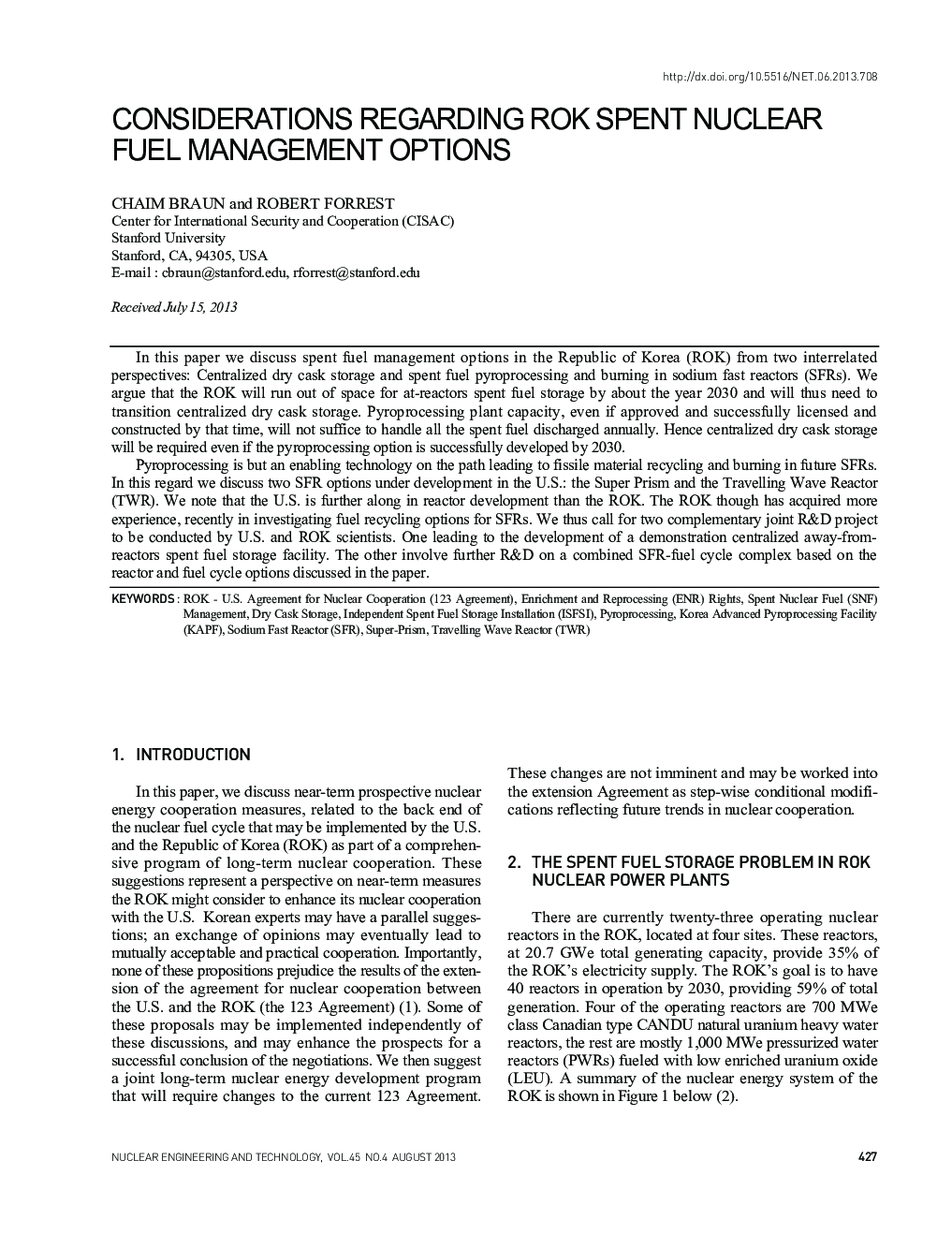| Article ID | Journal | Published Year | Pages | File Type |
|---|---|---|---|---|
| 1740127 | Nuclear Engineering and Technology | 2013 | 12 Pages |
In this paper we discuss spent fuel management options in the Republic of Korea (ROK) from two interrelated perspectives: Centralized dry cask storage and spent fuel pyroprocessing and burning in sodium fast reactors (SFRs). We argue that the ROK will run out of space for at-reactors spent fuel storage by about the year 2030 and will thus need to transition centralized dry cask storage. Pyroprocessing plant capacity, even if approved and successfully licensed and constructed by that time, will not suffice to handle all the spent fuel discharged annually. Hence centralized dry cask storage will be required even if the pyroprocessing option is successfully developed by 2030.Pyroprocessing is but an enabling technology on the path leading to fissile material recycling and burning in future SFRs. In this regard we discuss two SFR options under development in the U.S.: the Super Prism and the Travelling Wave Reactor (TWR). We note that the U.S. is further along in reactor development than the ROK. The ROK though has acquired more experience, recently in investigating fuel recycling options for SFRs. We thus call for two complementary joint R&D project to be conducted by U.S. and ROK scientists. One leading to the development of a demonstration centralized away-from-reactors spent fuel storage facility. The other involve further R&D on a combined SFR-fuel cycle complex based on the reactor and fuel cycle options discussed in the paper.
